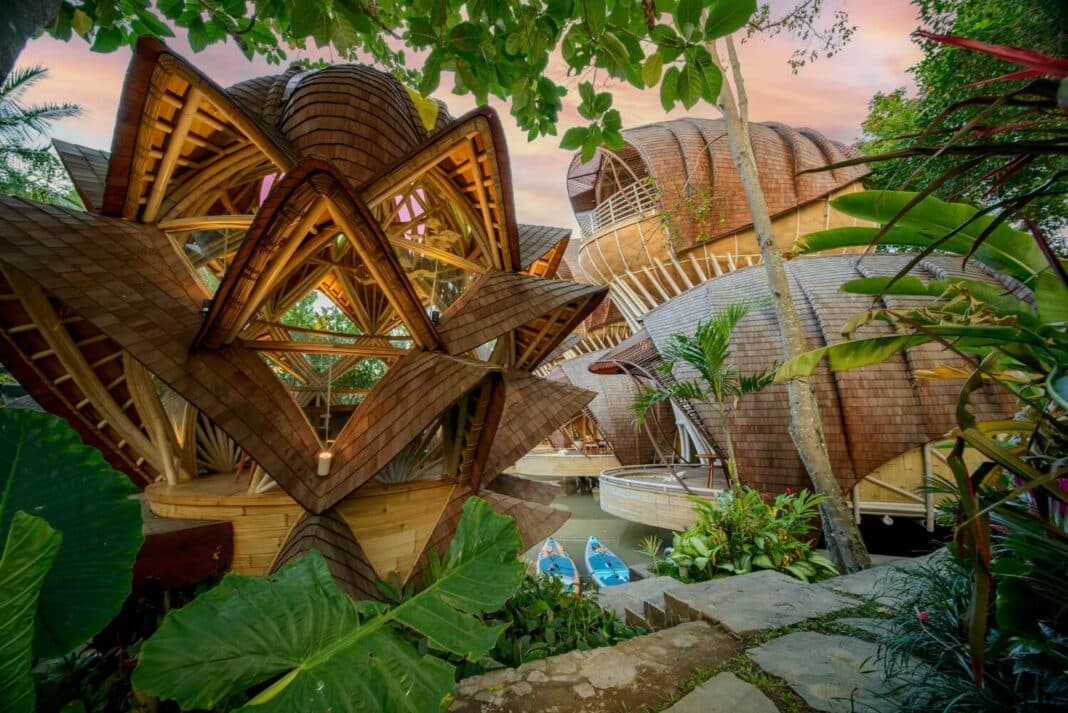Located in Kaba-Kaba, Tabanan, Bali, Wood Central brings you Ulaman – an eco-resort that fully captures ‘the Ubud feel.’
The brainchild of Dino Magnatta, a Toronto native and accomplished restaurateur, who sort to build ‘a house from bamboo,’ the dream of building a private villa on land with a river, a jungle and rice fields turned into something bigger.
What was to be a private villa turned into ‘Ulaman’ – a beautiful, sustainable resort with 8 bungalows and 3 further rooms in the main building.
That was 2019, and earlier this year, the second and final stage of development was complete – with the construction of the new Lotus restaurant.
The project, which has been extensively covered in architecture media, was designed by Charlie Hern from Inspiral Architecture and Design Studios who returned to the project three years after stage 1.
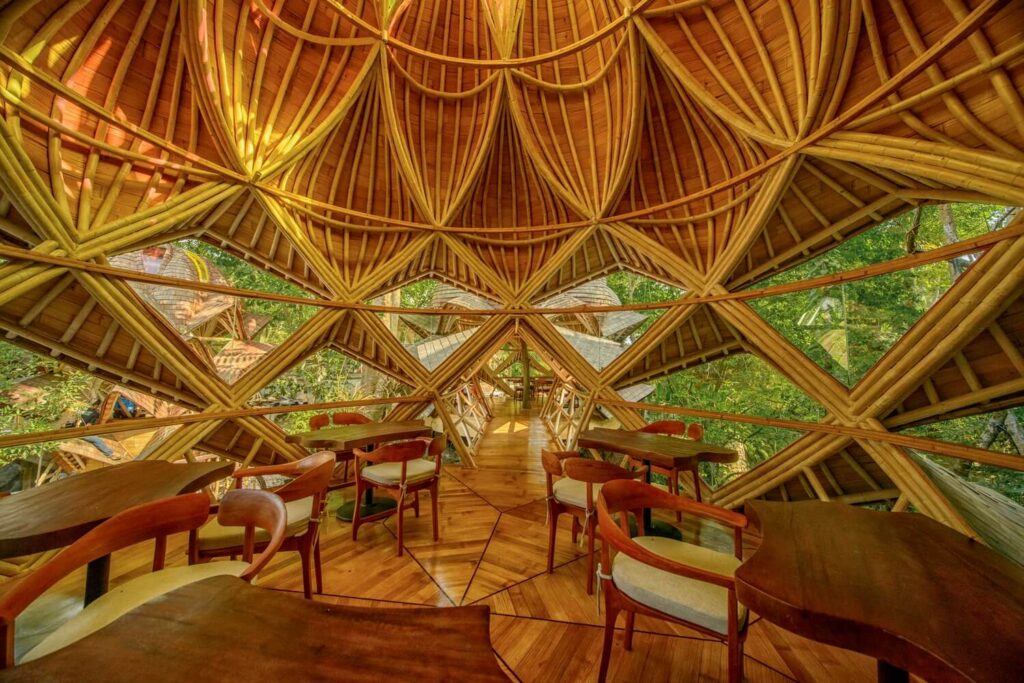
Green construction principles were deeply embedded in the project
In an interview with Yogi Times, Magnatta spoke about the instrumental role that Hern played in bringing the project.
“From the beginning, I clearly wanted to build my dream house using natural building material, especially out of the sustainable bamboo in Bali.”
“They not only had unique bamboo design experience but as they were considered ‘green architects’ among the ‘green construction movement group’ here in Bali, I knew it was the perfect match.”
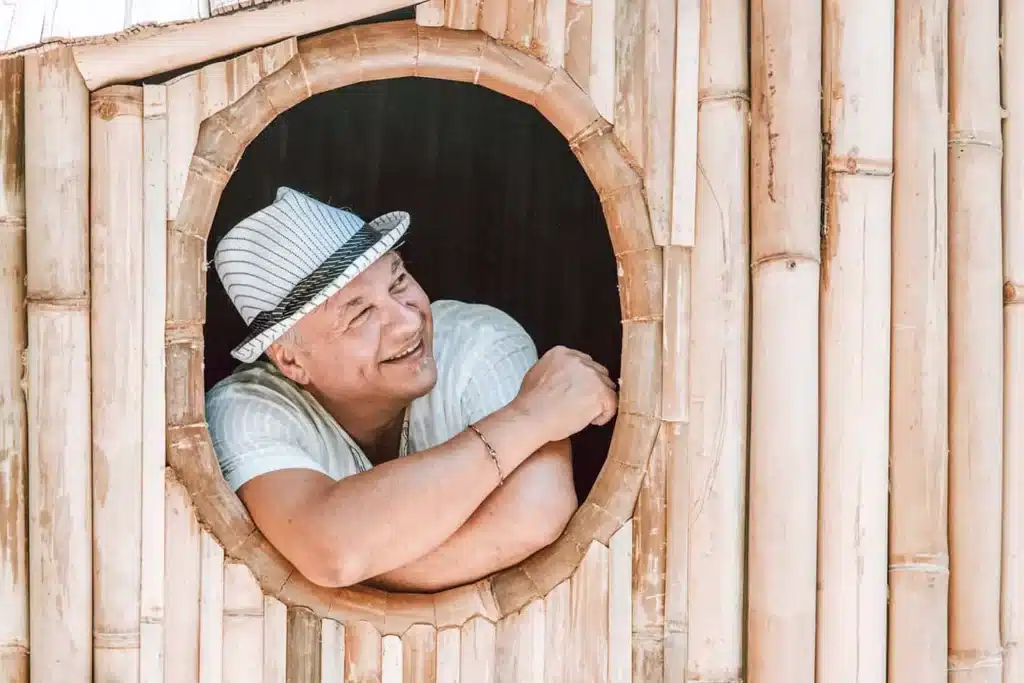
“After meeting with Charlie, explaining my vision of making the architectural and design feel to be a part of the natural jungle and river surroundings, I knew he ‘got me.’”
Phase 1 of the project was well received by the media and public alike, obtaining multiple design features and awards, most notably the highly acclaimed UNESCO Prix-Versailles award for Sustainable Architecture.
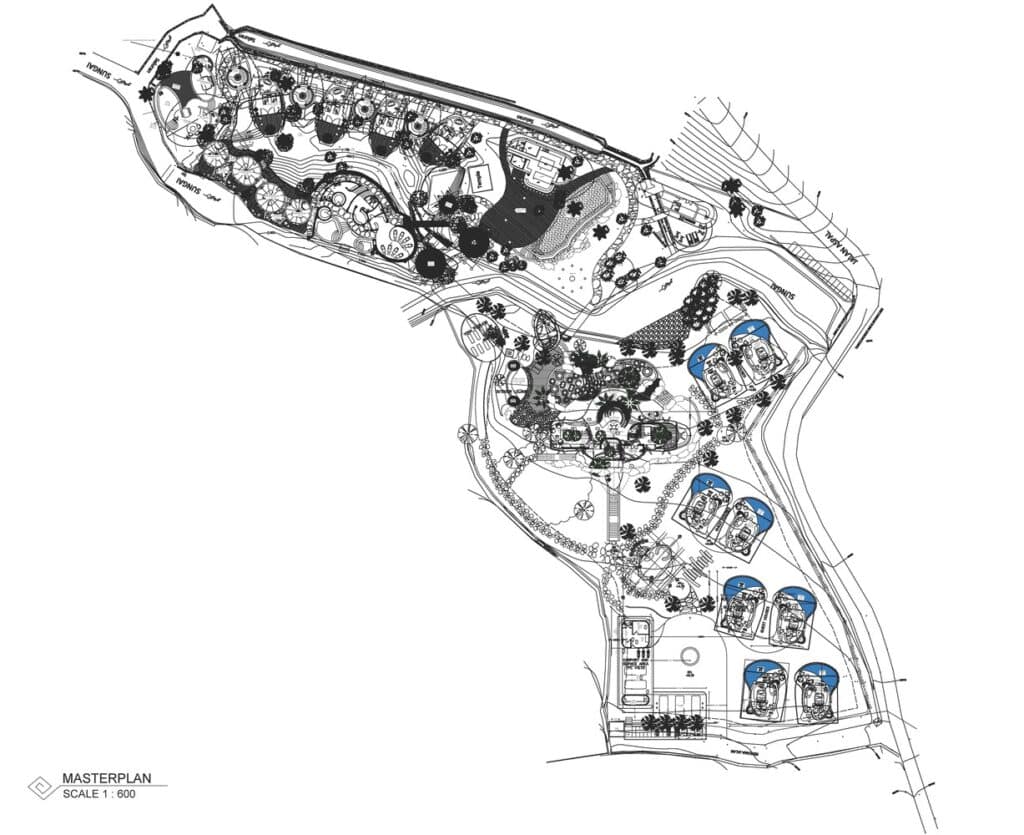
Rammed earth and bamboo is featured extensively in construction
Continuing from phase one with a palette of materials including rammed earth, bamboo, natural stone, and reclaimed timbers, new key elements such as composite SIP panels have also been incorporated.
Rammed earth is used for the resort’s ground level walls, while the rest of the structure has been made with bamboo, much of which was harvested from the site.
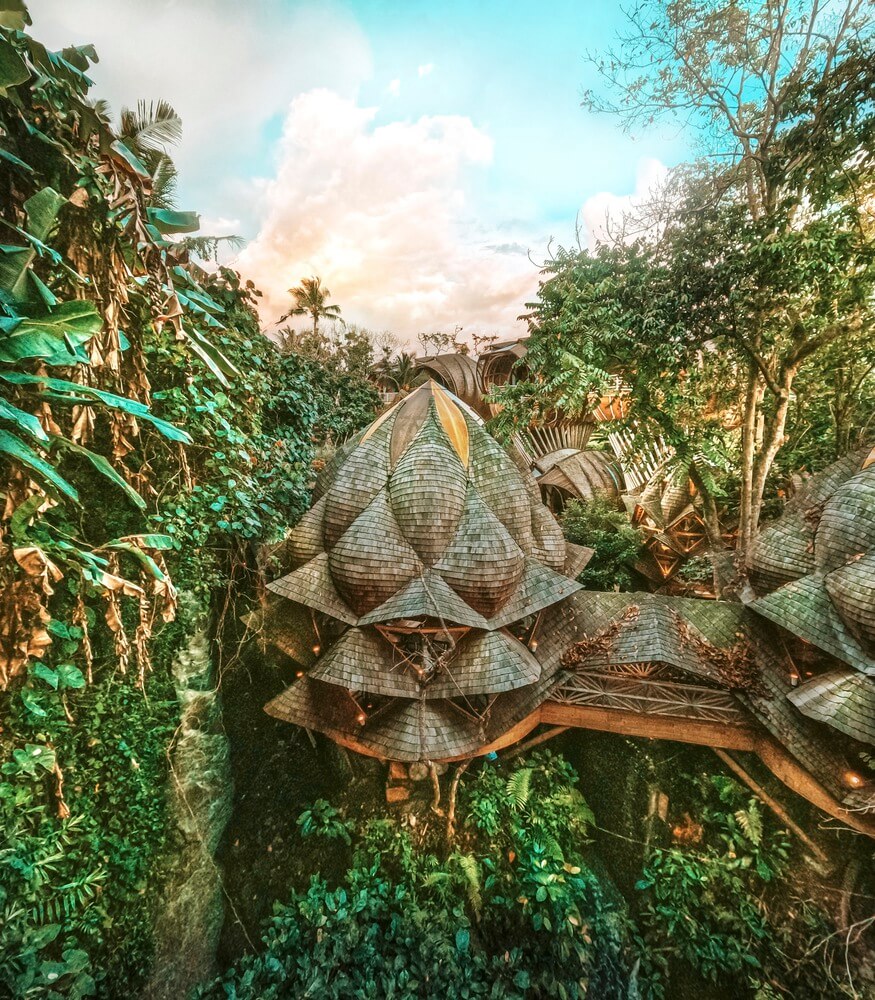
The project is the first in Southeast Asia to use ‘rammed earth’ in construction. Magnatta explains:
“With the help of a Canadian consultant, I decided to learn all about rammed earth and experiment with different recipes and colour tones for all the retreat walls.”
The Bamboo, which was supplied and installed by Asali Bali, was chosen not only because of its sustainable qualities but also for its flexibility, which allowed the architects to create “spaces that echo the abundance of life in the tropics.”
The project featured more than 1500sqm of bamboo – and was featured on the ground floor, structural area and roof areas.
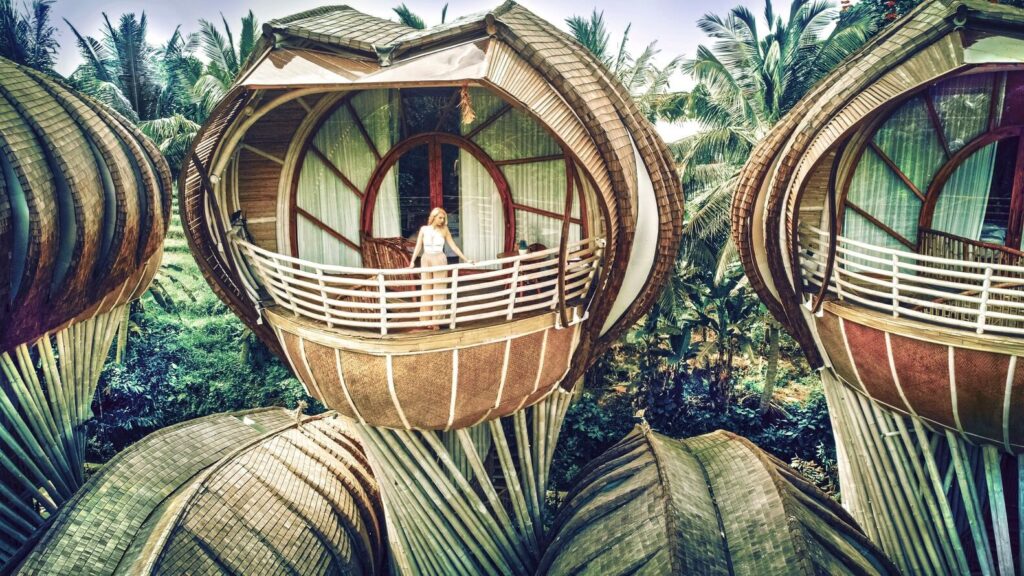
This is the second bamboo project case study covered by Wood Central – following the Panama Treetops story earlier this month – with bamboo and other grass products favoured by the likes of renowned architect Michael Green where sustainable timbers are not available.
‘Ecolux’ – environmentally conscious without compromising luxury
According to Magnatta, merging comfort and luxury with ecological comfort has been a fine balance.
In 2019, Magnatta was balancing whether to have televisions in the rooms.
“In the end, I figured that it’s there for those who want it, and I made Netflix and YouTube available, which now are fully accessible in every room.”
Fast forward to 2022 and the eco-resort fully operates from hydroelectric turbines generated from a lake adjacent to the new Lotus restaurant dining area.
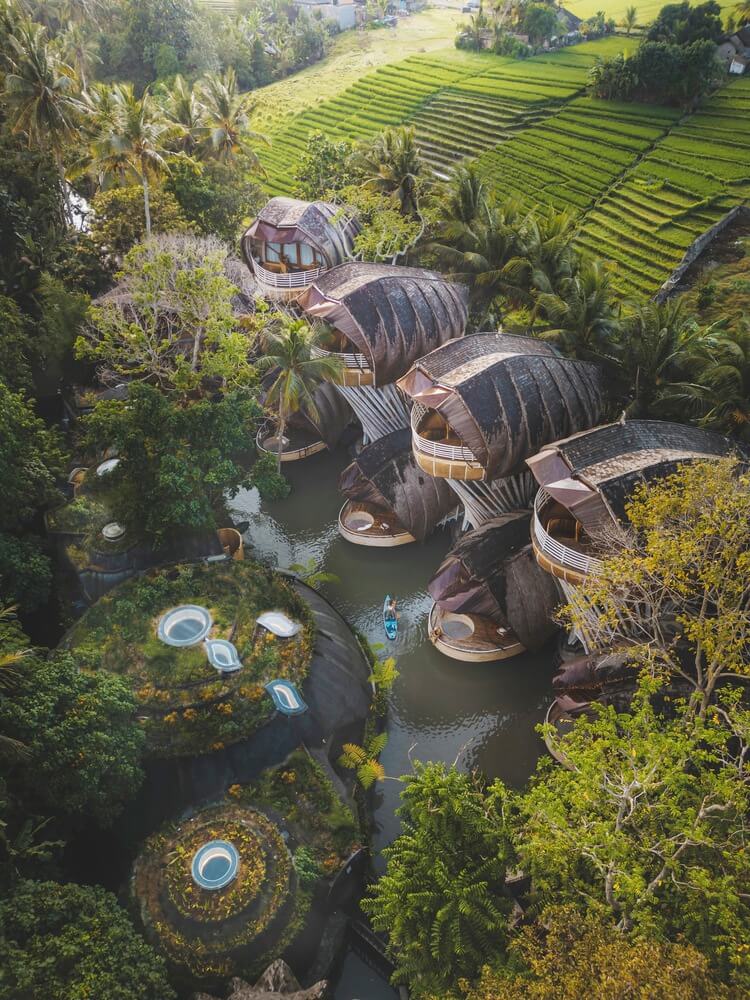
The lake, which has been resorted after being drained for agricultural purposes acts as a reservoir for the precinct.
The resort is on a quest to create a fully circular retreat – with a commitment to recycle, reuse and reduce materials, Magnatta is working with the local community to improve water filtration, waste management and bioenergy options.
“We work very closely with the adjoining Subaks (rice fields) in managing the water flows and damn filtering grates to collect the garbage flows.”
“This helps keep the Ulaman river cleaner. Also, we support the local youth by having them take care of cleaning any remaining garbage found in our waters.”
“We recycle and reuse the ‘grey’ water in the irrigation of our landscape.”
- Do you have a project that you would like Wood Central to share? Contact Wood Central and we will cover the project as part of our daily timber case study series.



